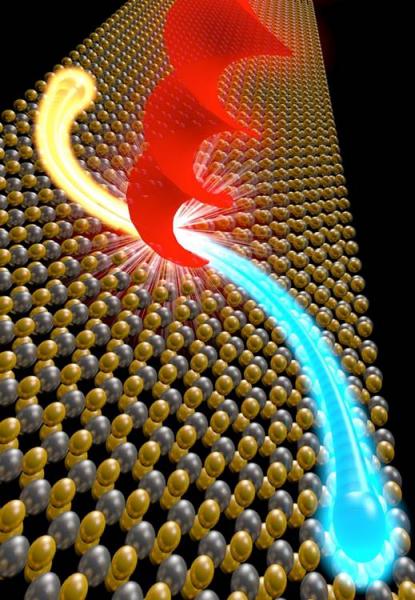
New property of electrons may lead to novel electronic devices
How electrons conduct electricity depends on their valley
To meet demand for smaller, more powerful electronics, engineers are struggling to find ways to store more information in a smaller area. Today’s computers store information digitally as a series of 1’s and 0’s using two fundamental properties of electrons: their charge (which enables flash drives) and their spin (which enables hard disks). To date, advances in digital storage have relied on a simple approach: writing smaller 1’s and 0’s.
A recent breakthrough at Cornell University may enable a different approach. The Cornell team has shown that electrons in single-molecule-thick films of molybdenum disulfide (MoS2), a common lubricant, have a third fundamental property: a “valley.” Half of the electrons in MoS2 are in one valley, while the rest are in a second valley. An electron’s valley plays an important role in determining how it conducts electricity, potentially leading to a new way to store information.
This property also leads to the newly observed “valley Hall effect.” The regular Hall effect, first observed in 1879, is used in a wide variety of sensors, including fuel gauges and antilock brakes. The new valley Hall effect may enable a new generation of electronic and optoelectronic devices.
In the valley Hall effect, the motion of an electrons is determined its “valley,” represented here by color.